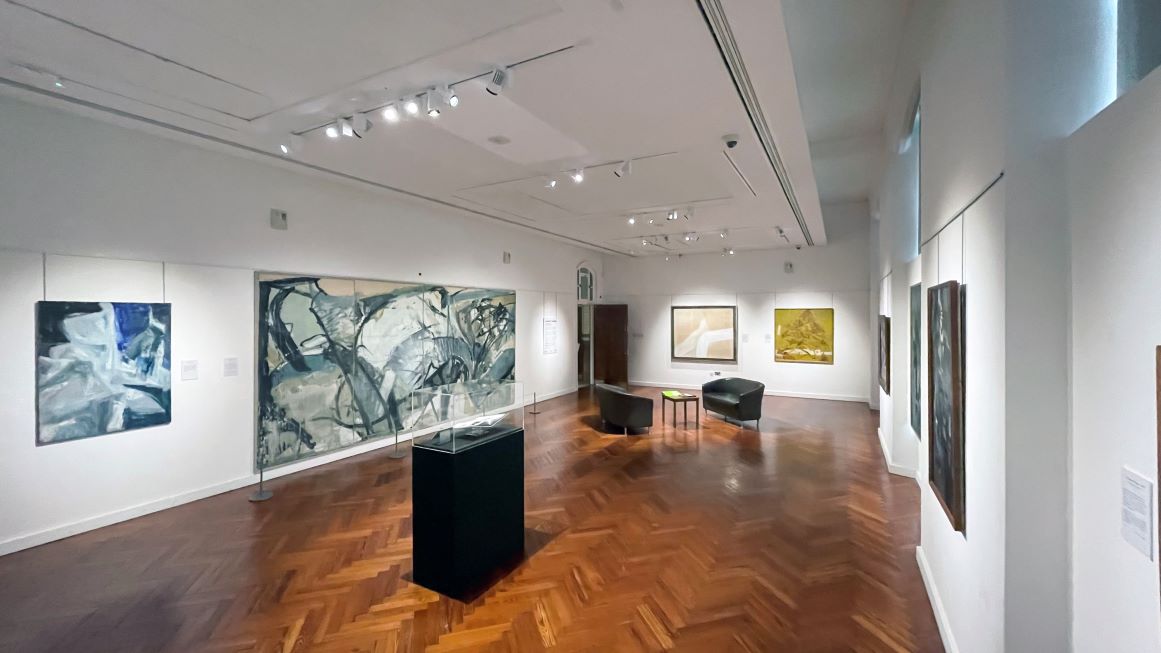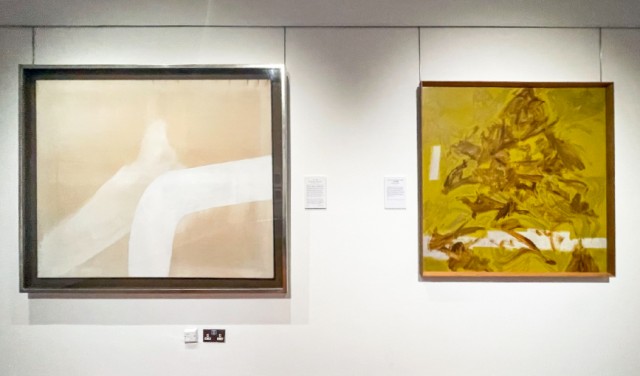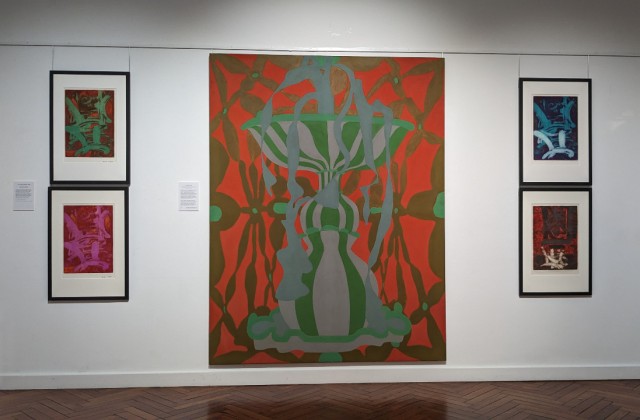Abstract Thinking: Fanchon Fröhlich & Her Contemporaries – Reviewed

With two exhibitions in quick succession, Liverpool-based artist Fanchon Fröhlich has been subject to much recent recuperation. The latest show, at the Victoria Gallery & Museum, places her in conversation with her peers and the wider modernist movement…
With last year’s Fanchon Fröhlich: The Wrong Sex, the team at LJMU’s Exhibition Research Lab sought to recuperate the almost forgotten Liverpool-based artist of the title. Including abstract works by Fröhlich alongside a selection created in collaboration (termed collective phenomena), it was a timely rediscovery as visual art history continues to undergo a much-needed reassessment.
Not to be outdone, Liverpool University’s Victoria Gallery & Museum is currently host to Abstract Thinking: Fanchon Fröhlich & Her Contemporaries, in which the artist is situated in a flourishing artistic scene. It’s a bold move – the LJMU show asked us to consider the artist’s merits in isolation. Here, though, we do so alongside names including Peter Lanyon, Gillian Ayres and Sandra Blow – establishment figures by comparison. Could her work stack up in such company? Or would this exhibition have the unfortunate effect of confirming that Fröhlich’s name had largely disappeared from view for a reason?
Certainly, with regard to the latter, the exhibition’s curator doesn’t think so. Resisting any temptation to shy away from comparisons, there is no separation of Fröhlich from her contemporaries. Indeed, the first encounter on arrival is a very deliberate pairing of Royal Academician Sandra Blow’s elegant 1966 work, No.1, pictured below on the left, with Fröhlich’s early 60s Abstract, Amber, Brown & White (right). There is a similar palette, and, as pointed out in the wall text, each is questing for pure abstraction free from references; but parallels end there. The contrast in quality, to my eyes, is stark, Fröhlich suffering by comparison.

The road, however, becomes easier, more even, as we are introduced to Fröhlich’s journey. From the mid-50s, Abstract Landscape almost puts me in mind of the explosive work of the vorticists, or Paul Nash even. In it can be discerned a tradition of earlier English abstraction, and its angular geometries suggest the unsteady uncertainty of history. On the opposite wall we see a shift with Seascape Abstract (1958). Although dwarfed in scale by Peter Lanyon’s The Conflict of Man with Tides and Sands (sketch), from 1960, the pair complement each other nicely, suggesting that Fröhlich’s time spent at Lanyon’s St. Ives studio was mutually beneficial.
Some of my favourite works in Abstract Thinking are Fröhlich’s prints. These see her casting her magpie eye further afield, beyond these shores, to the New York School; in particular, perhaps, in the direction of Franz Kline. She had been influenced by Japanese techniques and ideas, as demonstrated in Four Colour Etchings (1960s), which have a strong gestural, calligraphic feel. Bounding Gillian Ayres’ Fountain (1967), these works remind us of the worlds of possibility opened up by abstraction.

And that is where this show really excels. It’s not, in spirit, a compare and contrast exercise (however tempting it might be to read it exactly as this), but an indicator of the ease and benefits of exchange – across time and geography – enjoyed by the wider modernist project. It speaks volumes about the transmission and translation of ideas, about how visual languages travel, taken up and reinterpreted by others who, like Fröhlich, forge new work inflected with new dialects.
Mike Pinnington
Abstract Thinking: Fanchon Fröhlich & Her Contemporaries continues at the Victoria Gallery & Museum until 30 March
Talk: Abstract Thinking: Fanchon Fröhlich and Her Contemporaries – 20 January, 12:00 – 12:45 pm at the Victoria Gallery & Museum
Further Reading: Fanchon Fröhlich: The Wrong Sex – Reviewed
With thanks to the Victoria Gallery & Museum for installation images





